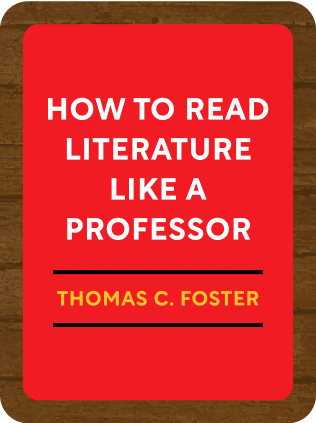

This article is an excerpt from the Shortform book guide to "How to Read Literature Like a Professor" by Thomas C. Foster. Shortform has the world's best summaries and analyses of books you should be reading.
Like this article? Sign up for a free trial here .
Why are vampires so commonly written about in literature? What do vampires symbolize?
In literature, dark creatures such as vampires, ghouls, and ghosts often have deeper meanings. It was especially common to write about vampires in the Victorian era because books were censored and vampires were a euphemism for sexual encounters.
Keep reading to learn about vampires in literature.
Vampires, Ghosts, and Other Exploitative Characters
Ghosts and vampires in literature are almost always a symbolic representation of the darker side of our reality.
Think about Dracula: An old, dangerous, alluring man who preys on beautiful, unmarried women. When he finds a victim, he uses her life force to become younger and more alive. Read that way, it seems that Count Dracula is about a lot more than just a cheap scare.
Beyond the literal interpretation of vampirism (sucking blood and the rest), vampirism should be read symbolically to mean exploitation of others, seduction, and a lack of respect for others’ autonomy.
Similarly, literary ghosts are always about more than scaring the reader. Often, they are meant to present a lesson. For example, in A Christmas Carol, Marley’s ghost is there to teach Scrooge about ethics.
Doppelgangers and evil twins are scary, of course. But they also show the dual nature of humans, like Dr. Jekyll’s other half, Hyde. Even a respectable doctor has a dark side that is capable of evil.
Vampire Symbolism
The Victorian era of literature was particularly full of vampire and ghost stories because mythical characters were a convenient way to write about subjects that were considered taboo at the time—like sex. Victorian authors translated these taboo subjects into symbolic forms, like vampires, to avoid censorship issues. Can you see how a man sucking the blood of a woman might be representative of a sexual encounter?
Even today, writers use scary things to symbolize the dark side of human nature and experience. But the difficult part about recognizing vampiric symbols in literature today is that they aren’t always presented as vampires.
- Example: In Henry James’ Daisy Miller, a young, innocent American girl named Daisy is interested in an older, prestigious man named Winterbourne. Because Daisy doesn’t subscribe to the rules of society, Winterbourne is both attracted to and repulsed by her. Winterbourne strings Daisy along until she is left with no energy or interest to go on. Here, Winterbourne exemplifies the consuming spirit of a vampire, showing that there is a thin line between ordinary people and monsters.
Any time you read about a character or group who grows in strength by weakening someone else, analyze how that character is vampiric in nature.
And any time you read a book about vampires, ghosts, or other scary figures, consider how there might be a dual purpose in the story, as a parallel to reality.

———End of Preview———
Like what you just read? Read the rest of the world's best book summary and analysis of Thomas C. Foster's "How to Read Literature Like a Professor" at Shortform .
Here's what you'll find in our full How to Read Literature Like a Professor summary :
- How to get more out of the novels that you read
- Why you should focus on memory, symbols, and patterns to understand literature better
- Why sex scenes aren't always about sex






